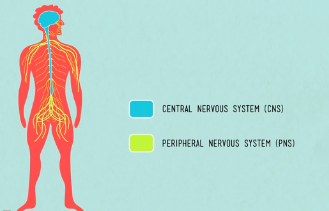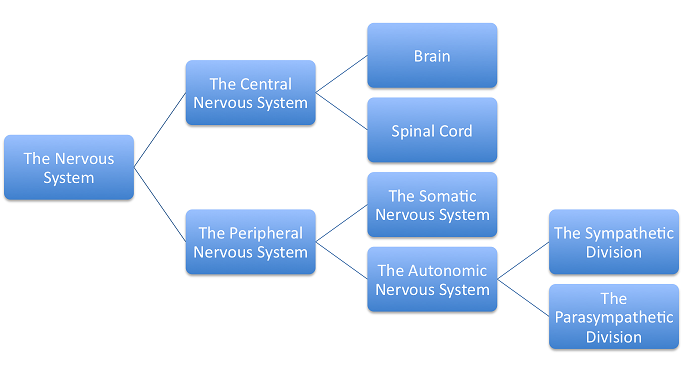
With the exception of some very simple organisms, every single animal has a nervous system. It is what makes us sentient, living things.
The entire structure of the nervous system is made up of specialized cells that are found nowhere else in the body. Most of these are neurons. Neurons bundle together to form nerves - pathways that transmit electrochemical signals from one part of your body to the the other.¹ The other type of specialized cells are glia, which essentially serve as support and maintenance to the neuron.
The nervous system is comprised of two divisions: the central nervous system (CNS) and the peripheral nervous system (PNS).
This simple diagram illustrates the basic division of the CNS and PNS within the nervous system. Image Credit: CrashCourse Biology: The Nervous System
The CNS consists of the brain and spinal cord and is responsible for analyzing and interpreting the data that the PNS - all of the nerves outside of the brain and spine - collects and sends its way.¹ Once the CNS has analyzed the data it sends a signal back to the PNS instructing it to perform an action which the PNS carries out. The main function of the PNS is to relay messages between the CNS and the rest of the body.

Both of these systems contain two types of neurons: afferent and efferent. Afferent neurons carry messages to the brain and efferent neurons carry messages from the brain to the rest of the body. In the PNS, afferent neurons are called sensory neurons and efferent neurons are known as motor neurons. Sensory neurons send signals to the brain triggered by outside stimuli and motor neurons send signals throughout the body based on decisions made in the CNS.¹ Within the CNS, afferent and efferent neurons exchange signals to different parts of the brain.¹
The PNS is comprised of two different systems:
- The somatic nervous system (SNS) is responsible for voluntary body movement and for sensing external stimuli.¹
- The autonomic nervous system (ANS) is responsible for regulating involuntary bodily functions such as heartbeat, blood flow, breathing and digestion.¹ The ANS has two divisions:
Reference:
1.Carlson, Neil R., Buskist, W., Heth, C.D, Schmaltz, R. Psychology - The Science of Behaviour.


